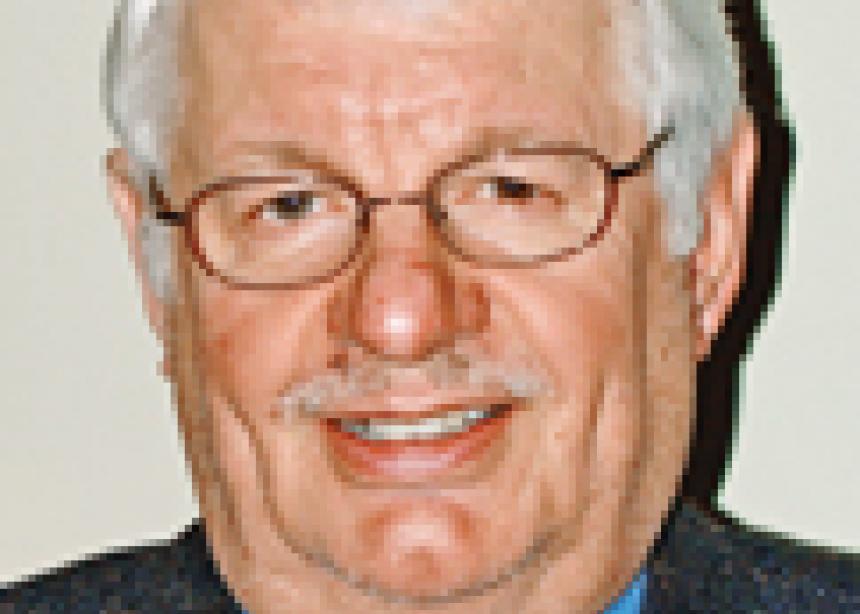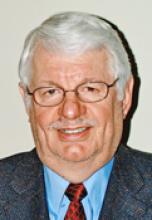Sometimes it takes an outsider to tell us quiet, unassuming Mennonites that we do indeed have clothes.
Stuart Murray, a British biblical scholar from the Baptist tradition who has just published The Naked Anabaptist, wonders, in an interview with John Longhurst on page 4, why North American Mennonites have so little interest in Anabaptism when so many spiritual seekers outside of our tradition are “coming home” to a 500-year-old belief system in this post-Christian era.
The author cites numerous examples of Anglicans, Presbyterians, Catholics and Quakers finding Anabaptism “surprisingly relevant” in contemporary culture. It’s not that these mainstream communions are searching for a new denomination or looking for a way to leave their own, he writes, but rather they “are seeking inspiration, resources and fresh perspectives to enrich and enhance their own lives.”
Murray, chair of the Anabaptist Network, hears lots of discussion at our seminaries and colleges on his visits to Canada and the US, but asks why it hasn’t filtered down to the congregations. While this may be over-stating the case slightly, his speculation that “maybe it has gotten so lost beneath all the Mennonite traditions and trappings over time, it doesn’t seem special anymore,” is a fair analysis.
Perhaps for some of us, acculturation has advanced to the developmental stage of being embarrassed to associate with a tradition of radical beliefs and living on the political/religious margins that have marked our five-century-long history. We wonder how that enhances our witness, if we want to “witness” at all.
We might be weary of miscast stereotypes, charges of separatism, of having our brand of pacifism labelled as “unpatriotic” at best or “subversive” at worst. I was in for a jolt recently when a BBC reporter asked me to identify some “real Mennonites locally—you know, the ones who drive horse and buggies”—for a TV documentary. It was not an inspiring moment, as I tried to disabuse her of broad-brush stereotypes.
Or, in a more proactive mode, we might want to understate our core Anabaptist beliefs as we quietly get more involved in the socio-political processes, strategically going low profile so as to be more effective and less offensive, in an attempt to bring our values to bear on institutional systems.
Wherever we are on this spectrum, Murray, in a profoundly prophetic way, is calling us back to our roots and asking us to re-define a set of durable beliefs to fit the contemporary scene—a landscape vividly described by Greg Boyd (author of The Myth of a Christian Nation) in the foreword to Murray’s book (excerpted on page 6) as only “a cultural vestige of the once mighty empire of Christendom in Europe and North America.”
“There is an increasingly shared conviction,” writes Boyd, “that the kingdom of God we are called to is radically different from all versions of the kingdoms of the world. While the kingdoms of the world all manifest the character of Caesar as they seek to rule people and conquer enemies with the power of the sword, the kingdom of God always manifests the character of Jesus, seeking to serve and love enemies as it manifests the power of the cross.”
In a unique way, Murray turns all of our misgivings, all of our inhibitions, on their head, and asks us to give our brand of peace, for instance, as a gift to the wider church—a calling to that larger body to be “no longer compromised by its partnership with wealth, power, status and control.”
It is not that we are uninformed. We owe a debt of gratitude to our biblical scholars and historians—the “tribal chiefs,” to use Murray’s parlance—such as C. Arnold Snyder, James Reimer, Walter Klaassen and William Klassen, Tom Yoder Neufeld, Alan and Eleanor Kreider, Harry Huebner, David Schroeder, Mary Shertz, Gale Gerber Koontz and Jack Suderman, to name a few of our higher-profile theologians/historians, not to mention the theological dean of our era, the late John Howard Yoder, who has given Anabaptism currency in broader theological circles and to us as students in the pew.
Thank you, Stuart Murray, for making us conscious of our Anabaptist “clothes.” All we need to do is wear them for “such a time as this.”
See also:
Exposing the ‘bare essentials’ of Anabaptism (an interview with Stuart Murray)
Anabaptism provides a map in the post-Christendom wilderness (a foreword by Gregory Boyd)
Join ‘Naked Anabaptists’ on Facebook
Our naked selves



Add new comment
Canadian Mennonite invites comments and encourages constructive discussion about our content. Actual full names (first and last) are required. Comments are moderated and may be edited. They will not appear online until approved and will be posted during business hours. Some comments may be reproduced in print.